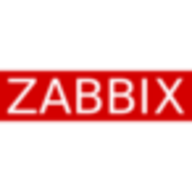


Find out what your peers are saying about Zabbix, Auvik, SolarWinds and others in Network Monitoring Software.
They often treat issues in isolation, not considering how one problem might relate to another.
When I was working directly with Microsoft at TCS, my first company, the support experience was quite smooth, and we received solutions promptly.
It is so straightforward that I have never had to use the support.
If the user interface isn’t presenting data well, it becomes difficult to manage when scaling.
The scalability of SCOM, meaning its ability to adapt to our needs, is excellent because we are working with SQL systems and multiple servers.
Zabbix has high scalability.
Zabbix is very scalable and lightweight.
I would rate its scalability ten out of ten.
It is very stable.
I have not seen many errors or frequent data loss because once we have installed the agent on the system and have the details, not much manual intervention is required.
SCOM is a bit unstable lately, primarily due to a lack of resources.
Zabbix is very scalable and lightweight.
Zabbix is quite stable, and we haven't had any problems with Zabbix itself.
Many tools have poor user interfaces, making them hard to manage and navigate.
The GUI could be improved. It's a bit too basic.
I would like to see a software-as-a-service version in Azure to eliminate the need for on-premise infrastructure.
SCOM is likely to be phased out in favor of more compatible tools like Icinga for application monitoring or when moving to cloud solutions like CloudWatch and Azure.
It would be beneficial to have a summary on one single dashboard, as there are many more possibilities available.
The only issue I can note is that it's Linux-based, and Linux documentation is not the best.
We are using the free, open-source version.
The pricing for the Nagios XI product is good and better than other solutions.
It is literally free.
Nagios XI simplifies our setup and reduces the time spent configuring monitoring tools.
The alerting system is very effective.
It assists me in detecting server downtime and delivers basic performance monitoring right out of the box.
The most valuable feature of SCOM is its monitoring capability, and we have integrated SCOM with Grafana, which is a dashboarding tool.
SCOM integrates several systems and offers correlation features, like setting up everything around Active Directory or DNS.
If disk usage surpasses a threshold, say 70%, I receive alerts and can take proactive action.
People want to save costs, which is why they install Zabbix, but the reporting functionality is not properly developed.
Zabbix has a lot of features, including monitoring, status updates, and collecting information telemetry from storages and servers as well.
| Product | Market Share (%) |
|---|---|
| Zabbix | 11.7% |
| SCOM | 1.7% |
| Nagios XI | 3.1% |
| Other | 83.5% |



| Company Size | Count |
|---|---|
| Small Business | 22 |
| Midsize Enterprise | 17 |
| Large Enterprise | 21 |
| Company Size | Count |
|---|---|
| Small Business | 16 |
| Midsize Enterprise | 22 |
| Large Enterprise | 54 |
| Company Size | Count |
|---|---|
| Small Business | 53 |
| Midsize Enterprise | 23 |
| Large Enterprise | 34 |
Nagios XI provides monitoring of all mission-critical infrastructure components, including applications, services, operating systems, network protocols, systems metrics, and network infrastructure. Third-party add-ons provide tools for monitoring virtually all in-house and external applications, services, and systems.
Nagios XI uses a powerful Core 4 monitoring engine that provides users with the highest levels of server monitoring performance. This high degree of performance enables nearly limitless scalability and monitoring powers.
With Nagios XI, stakeholders can check up on their infrastructure status using the role-based web interface. Sophisticated dashboards enable access to monitoring information and third-party data. Administrators can easily set up permissions so users can only access the infrastructure they are authorized to view.
Nagios XI Benefits and Features
Some of the benefits and top features of using Nagios XI include:
Reviews from Real Users
Nagios XI stands out among its competitors for a number of reasons. Several major ones are its integration options and monitoring abilities, as well as its alerting features.
David P., a senior DevOps engineer at EML Payments Ltd, writes, “We use Nagios as a network discovery tool. We use Nagios to maintain our uptime statistics and to monitor our services. It has allowed us to be much more sophisticated in our monitoring and alerting.”
An IT-OSS manager at a comms service provider notes, “Nagios XI has a custom API feature, and we can expose custom APIs for our integration. This is a great feature.”
SCOM (System Center Operations Manager) is a cross-platform data center monitoring and reporting tool that checks the status of various objects defined within the environment, such as server hardware, system services, etc. The solution allows data center administrators to deploy, configure, manage, and monitor the operations, services, devices and applications of multiple enterprise IT systems via a single pane of glass. It is suitable for businesses of all sizes.
SCOM Features
SCOM has many valuable key features. Some of the most useful ones include:
SCOM Benefits
There are several benefits to implementing SCOM. Some of the biggest advantages the solution offers include:
Reviews from Real Users
Below are some reviews and helpful feedback written by PeerSpot users currently using the SCOM solution.
A Manager at a financial services firm says, “The feature I like most about SCOM is that it is easy-to-use. I find it very user-friendly. I also like the knowledge base which it has. You can find the resolution to questions or issues directly within the SCOM itself. It will alert you with a recommendation of what you need to do at the same time. This sort of self-diagnosis or prompting is one of the great values you get from SCOM compared to other solutions.”
PeerSpot user Zahari Z., Information Technology Auditor at a financial services firm, mentions, “Availability monitoring is the feature I have found most valuable, as well as the capacity and ability to send notifications. There is a mechanism to set up a notification from the SCOM and whenever there is a drop in the availability the notification alerts not only for availability but for other issues as well. You can align thresholds according to the speed of your environment and you can have a threshold related notification, which is one of the useful features.”
Bill W., Sr. Systems Engineer at Arapahoe County Government, comments, “ I like some of their newer features, such as maintenance schedules, because SCOM records SLA and SLO time. When we patch, things are automatically put into maintenance mode so that the numbers for our systems being down, do not count against us.”
A Project Manager at a tech services company explains, “The feature I have found most valuable is the book feature. While we run the Sprint one we can add some setups for multiple sprints.”
A Systems Engineer at an educational organization states, “Because it's Windows-based, it actually reports quite well. It reports everything you can think of on the Windows server and allows you to monitor anything. It's excellent for those in the Windows world as it's very good at it.”
Zabbix is an open-source monitoring software that provides real-time monitoring and alerting for servers, networks, applications, and services.
It offers a wide range of features including data collection, visualization, and reporting.
With its user-friendly interface and customizable dashboards, Zabbix helps organizations ensure the availability and performance of their IT infrastructure.